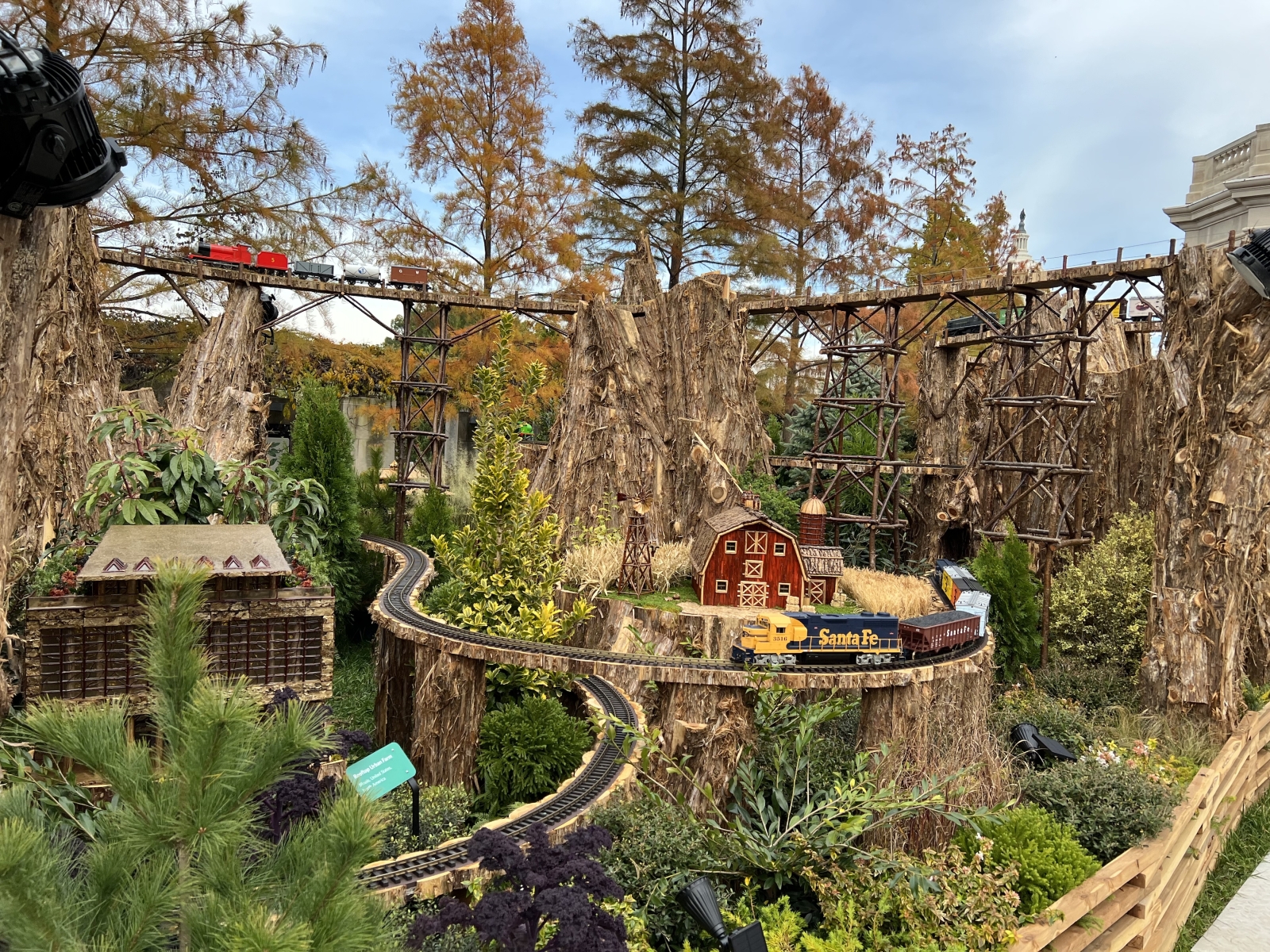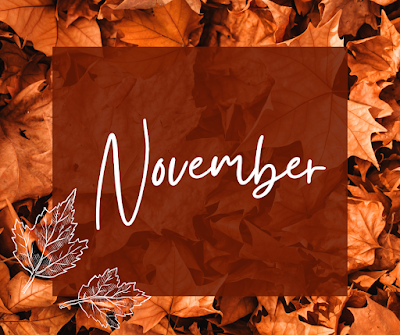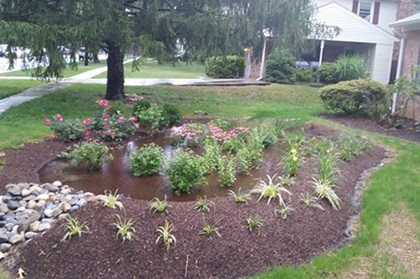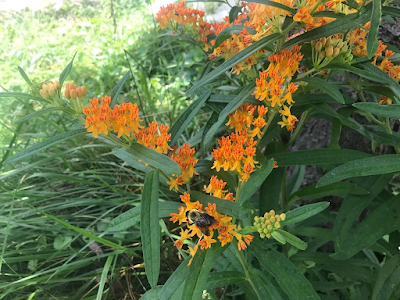 |
| The Greens have been cut and conditioned, ready to be made into beautiful wreaths and arrangements. |
A wonderful talk by Ann English of the Montgomery County RainScapes Program of the Department of Environmental Protection
Holiday Events
The Brookside Gardens Garden of Lights runs from Friday, November 22, 2024, to Sunday, January 5, 2024. It will be open daily, 5:00 pm to 9:00 pm. Garden of Lights will be closed November 25 to 28, December 24 to 25, and January 1.
Tickets are $10 and must be purchased Online for ages five and older.
Join members of the Garden Club on Tuesday, December 17th.
To join in, participants must purchase their own tickets. Tickets are available in 30-minute entrance time intervals and must be purchased only online at the website above.
The Garden Club visit entrance time selected is 6 pm to 6:30 pm
on December 17th.
We will gather in the Brookside Visitors Center at 6:30 pm. Tickets are on a first-come, first-served basis from a Brookside vendor (See website). Everyone may or may not be able to get the Garden Club selected time and date. Please try to order and pay soon if you want to join the Garden Club visit.
All ticket sales are final and non-refundable.
Tickets cost $10 each plus a $2.50 Service fee each - Total $12.50. Each person can order more than 1 ticket.
We hope you will join us on this fun Garden Club Trip. If you need additional information, please contact Sunny Banvard, (301-233-2574 cell , sunnybeme@hotmail.com ) or Betty Hiner (301-938-2813 cell, hinerbe@yahoo.com)
Please let Sunny or Betty know if you have tickets and will
meet us in the Brookside Visitors Center at 6:30 pm on December 17th.
US Botanic Gardens Season's Greenings 2024
Our popular annual holiday display “Season’s Greenings” features model trains in the gated outdoor gardens, festive lights throughout the Garden, and the poinsettias, holiday decor, and D.C. landmarks made from plants inside the Conservatory. On the lawn in the gated outdoor gardens, G-gauge model trains circulate from 10:00-5:00 daily through displays of pollinators made from plant parts. These scenes range from oversized models of native U.S. flowers like milkweed and bats pollinating a banana to an orchid bee pollinating a vanilla orchid flower, a chocolate midge pollinating a cacao flower, a lemur pollinating a traveler’s tree flower, and more! The Garden will be closed on December 25.
Outdoor Train Display
 This year, the outdoor holiday display includes a model train display in the gated outdoor gardens, with trains running from 10:00 a.m. to 5:00 p.m. between Nov. 28, 2024, and Jan. 5, 2025, closed Dec. 25. The train display will run until 8:00 p.m. on select Tuesdays and Thursdays.
This year, the outdoor holiday display includes a model train display in the gated outdoor gardens, with trains running from 10:00 a.m. to 5:00 p.m. between Nov. 28, 2024, and Jan. 5, 2025, closed Dec. 25. The train display will run until 8:00 p.m. on select Tuesdays and Thursdays.
🚆🚆🚆🚆🚆🚆🚆🚆🚆🚆🚆🚆🚆🚆🚆🚆🚆🚆🚆🚆🚆🚆🚆
The Sandy Spring Museum Garden Club is an activity group of the Sandy Spring Museum.
Our activities can be found on the Garden Club webpage: https://www.sandyspringmuseum.org/programs-and-events/garden-club/.
Follow us on Facebook and in the monthly Newsletters on our blogspot.


.png)







.png)








.png)






















